What are edge-on galaxies, and why are they important?
Ask a room full of astronomers how many galaxies there are in the observable Universe, and you’re likely to get a wide range of estimates: from as few as 200 billion (200,000 million) to as many as two trillion (two million million).
Either way, there are a lot… so it’s no surprise that there are a lot of different kinds of galaxy.
There are elliptical, spiral and irregular galaxies – the three main categories – as well as more exotic varieties such as lenticular galaxies, peculiar galaxies, radio galaxies, ring galaxies, shell galaxies and so on.

Edge-on galaxies explained
Edge-on galaxies, on the other hand, are slightly different. The terms above all describe the morphology (shape) of a galaxy, whereas ‘edge-on’ merely describes the angle at which it is seen from Earth.
Elliptical galaxies generally appear as a round-ish blob, whatever angle you’re looking at them from. Spiral and lenticular galaxies, on the other hand, can be either ‘face-on’ or ‘edge-on’.
Put very simply, if it looks like a whirlpool, it’s a face-on spiral galaxy (for example, the Whirlpool Galaxy, one of the most famous of all).
While if it’s vaguely cigar-shaped, it’s an edge-on spiral (or possibly lenticular) galaxy.
So far, so straightforward – and to make matters even easier, there’s another clue in the name of some of the best-known edge-on galaxies, such as the Cigar Galaxy, the Needle Galaxy and the Hockey Stick Galaxy.
We won’t insult your intelligence by pointing out that cigars, needles and hockey sticks are all long, thin objects – which is exactly how edge-on galaxies appear on the night sky when viewed from Earth.
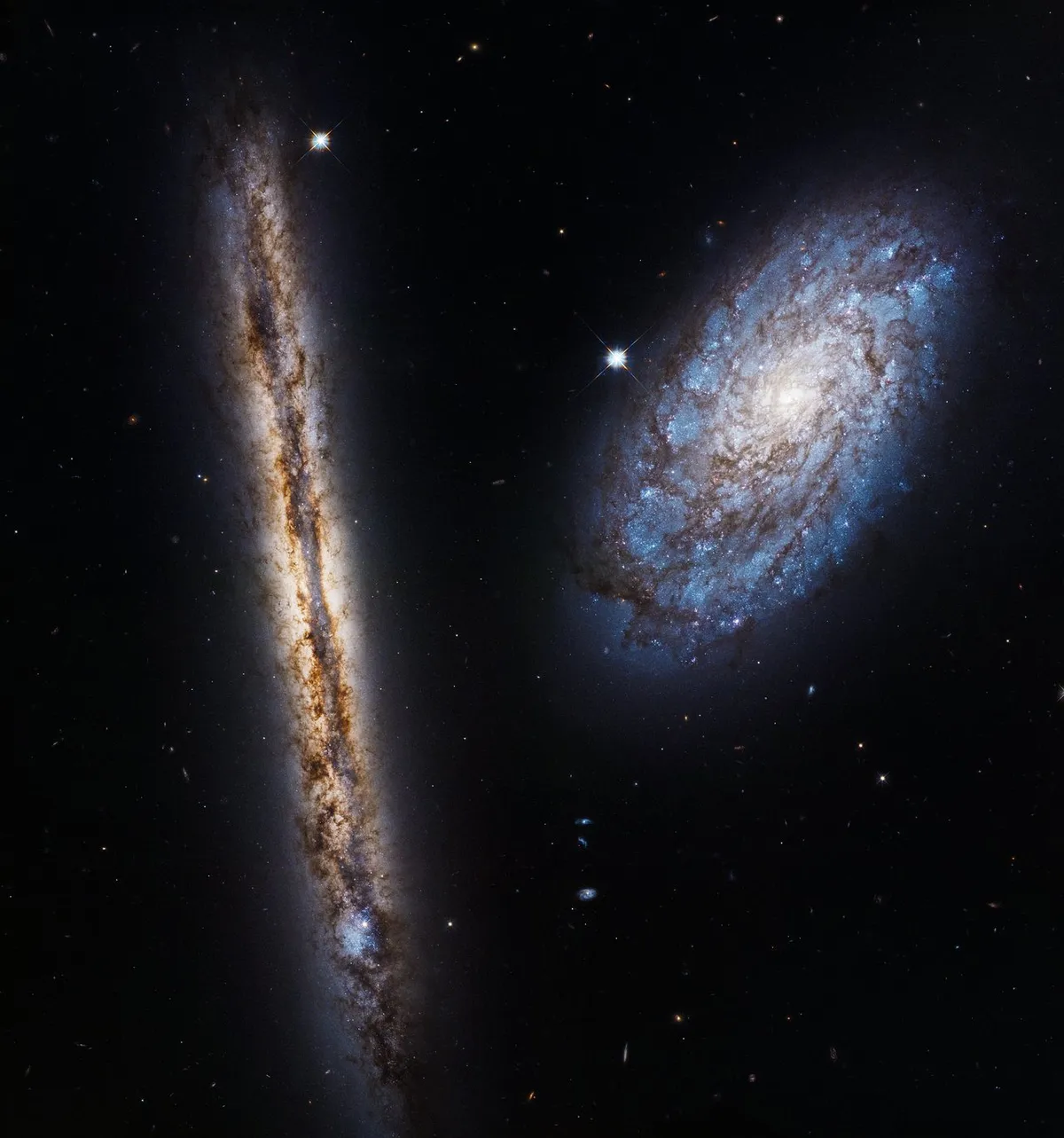
The science of edge-on galaxies
As for these galaxies’ scientific significance – that’s nice and easy, too.
Viewing galaxies edge-on, as opposed to face-on, can reveal much more about their three-dimensional structure, and hence give us clues as to the mechanics of their formation.
For instance, were all galaxies neatly arranged at right-angles to the Earth, so we saw them squarely face-on, it may have taken us a longer to work out that spiral galaxies have a central ‘bulge’, a thickening of the galactic disc in its centre.
A good example of this is the UFO Galaxy, an edge-on spiral that bears a remarkable similarity to the classic, cartoon-y idea of a ‘flying saucer’.
But that’s just one well-known example here are some more edge-on galaxies, and we've included the Right Ascension and Declination coordinates to help you find them yourself in the night sky.
For another observing challenge try and spot each of our lesser known galaxies you may not have seen before.
9 beautiful edge-on galaxies
The Cigar Galaxy

- AKA: Messier 82, NGC 3034
- Constellation: Ursa Major
- Distance from Earth: 11.4–12.4 Mly
- RA: 09h 55’ 52.2”
- Dec: +69° 40′ 47″
The UFO Galaxy
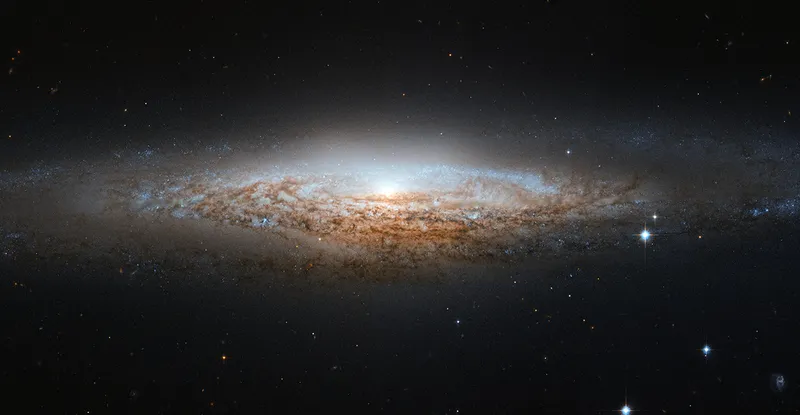
- AKA: NGC 2683
- Constellation: Lynx
- Distance from Earth: 29.6–31.4 Mly
- RA: 08h 52’ 41.3”
- Dec: +33° 25′ 19″
The Needle Galaxy
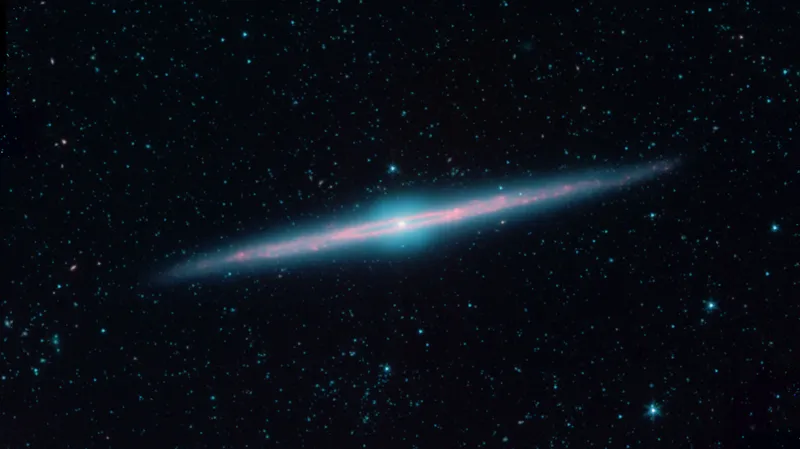
- AKA: NGC 4565, Caldwell 38
- Constellation: Coma Berenices
- Distance from Earth: 30–54 Mly
- RA: 12h 36’ 20.8”
- Dec: +25° 59′ 16″
The Hockey Stick Galaxy
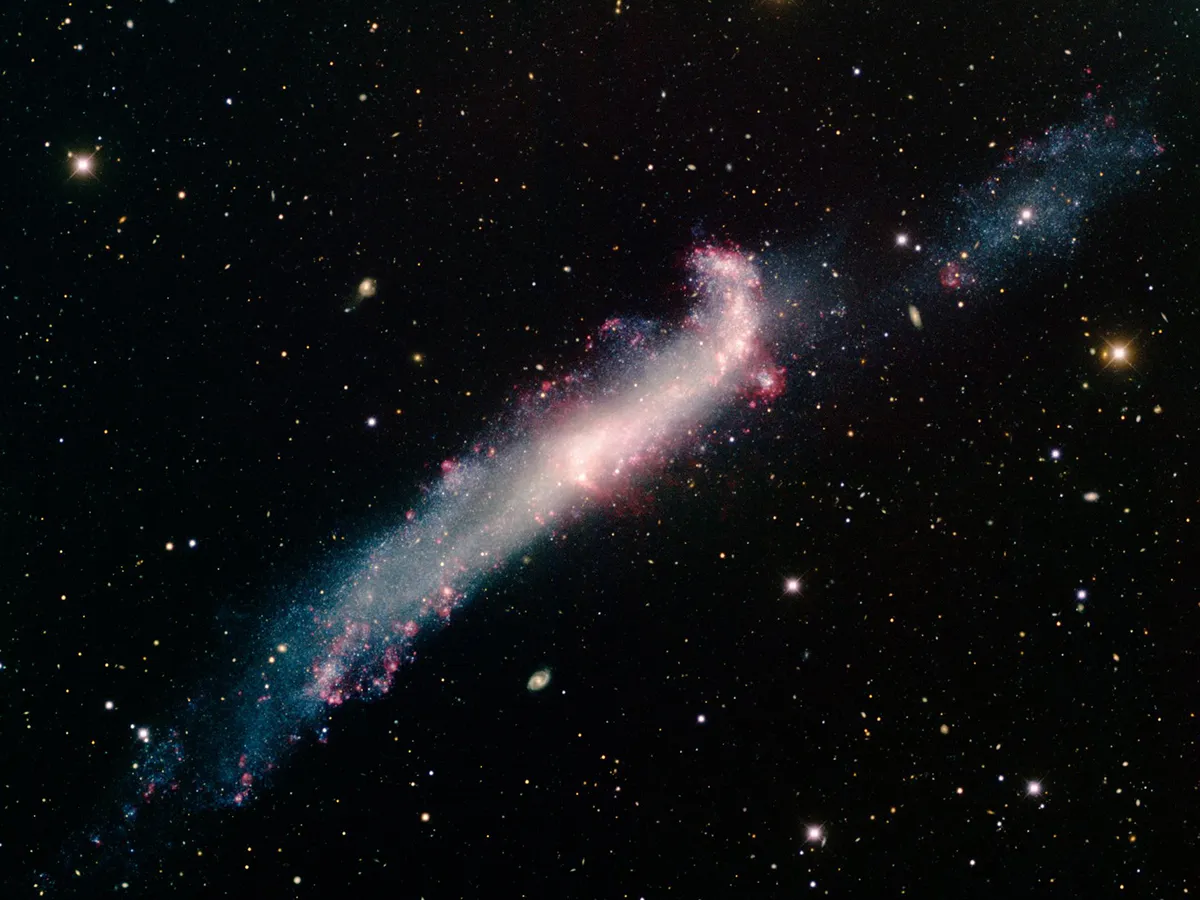
- AKA: NGC 4656 & NGC 4657
- Constellation: Canes Venatici
- Distance from Earth: 30 Mly
- RA: 12h 43’ 57.7”
- Dec: +32° 10′ 05″
The Whale Galaxy

- AKA: NGC 4631, Caldwell 32
- Constellation: Canes Venatici
- Distance from Earth: 30 Mly
- RA: 12h 42’ 08.0”
- Dec: +32° 32′ 29″
The Sombrero Galaxy

- AKA: Messier 104, NGC 4594
- Constellation: Virgo
- Distance from Earth: 30–32 Mly
- RA: 12h 39’ 59.4”
- Dec: −11° 37′ 23″
The Silver Dollar Galaxy
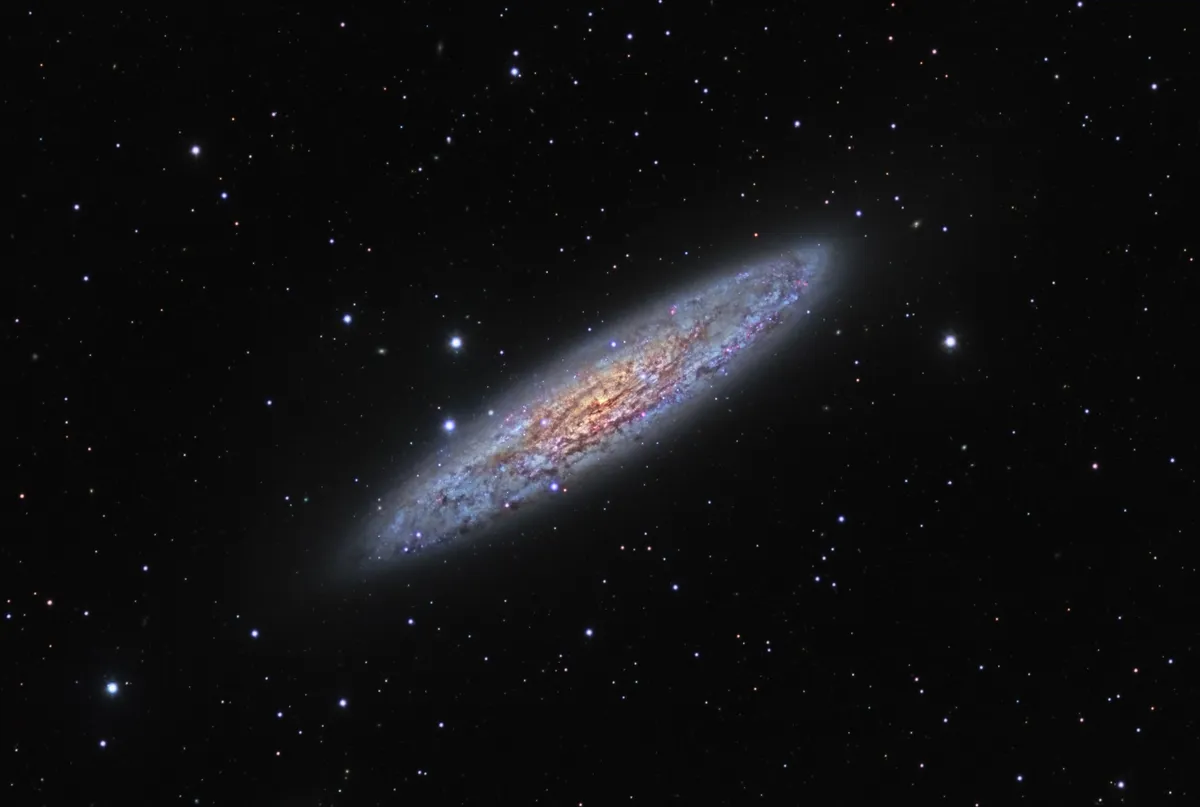
- AKA: The Sculptor Galaxy, NGC 253
- Constellation: Sculptor
- Distance from Earth: 10.7–12.1 Mly
- RA: 00h 47’ 33”
- Dec: −25° 17′ 18″
The Hamburger Galaxy
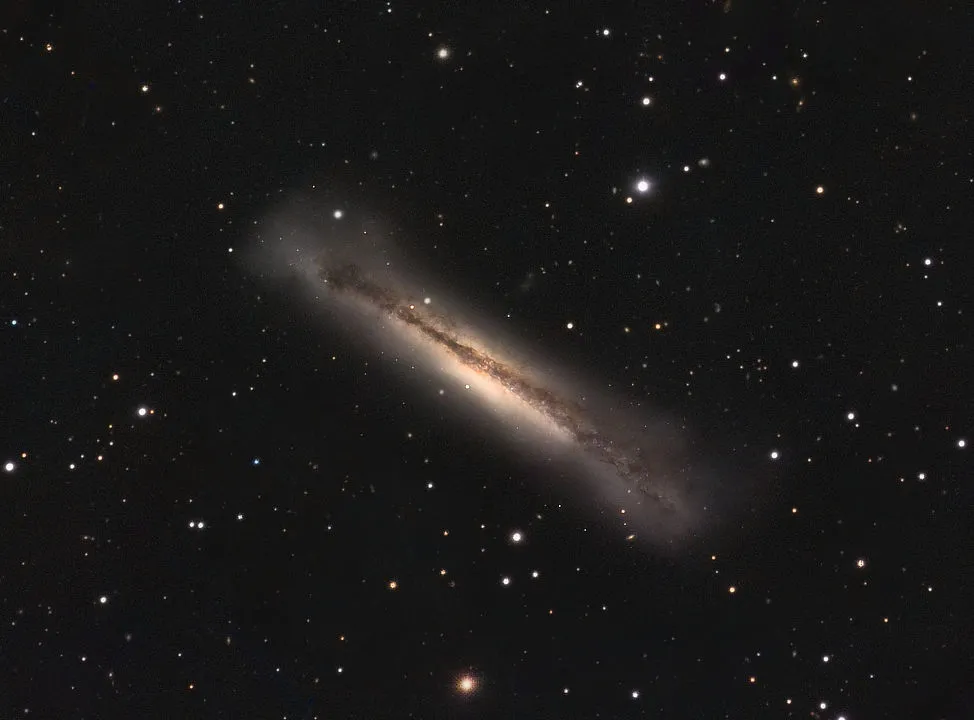
- AKA: NGC 3628
- Constellation: Leo
- Distance from Earth: 35 Mly
- RA: 11h 20’ 17.0”
- Dec: +13° 35′ 23″
The Silver Needle Galaxy

- AKA: NGC 4244, Caldwell 26
- Constellation: Canes Venatici
- Distance from Earth: 14.1 Mly
- RA: 12h 17’ 29.9”
- Dec: +37° 48′ 27″
Do you have a favourite edge-on galaxy? Have you managed to capture an image of it? Let us know by emailing contactus@skyatnightmagazine.com

